I love river cruising and was itching to get onto the Danube as soon as we reached Budapest, the Hungarian capital that the river neatly divides into two sections called Buda and Pest.
“We” being the international group of journalists I was traveling with, on an Insight Vacations tour of Central European capitals. Budapest was our last stop in a whirlwind tour that was an accelerated version of the regular Insight tours of the region, yet we managed to pack a huge amount of sightseeing into less than a week.
Having just left Vienna a few hours before, we arrived in Budapest in late afternoon in time to change money, change clothes, change languages and change mindsets from schnitzel to paprikash. Fortunately, goulash, sausages and strudel remained much the same.
Our hotel, the Sofitel Budapest Chain Bridge, had a prime location in Pest a few steps from the city’s most famous bridge, which accommodates both pedestrians and cars. The 165-year-old Chain Bridge (also called Lion Bridge, it was rebuilt exactly as before after being bombed in World War II) comes with a charming legend, that the architect accidentally left out the tongues of the four stone lions guarding the entrances on either end, and threw himself into the Danube when he discovered his mistake. While it’s true that the lions appear tongue-free, the dramatic flinging into the river never happened, and in fact the lions do have (recessed) tongues. But stories like this are too good not to tell, as I’m proving right now.
Dinner that night was served gloriously aboard a river boat that sailed up and down the Danube as darkness fell and the impressive monuments lining and crossing the river were lit up in a golden glow: churches, a palace, government buildings and bridges all shone brightly in the night, their reflections dancing on the water, but the true standout was the Hungarian Parliament Building. One of my fellow writers exclaimed that it was his favorite building in all of Europe, and at night, illuminated, its neo-gothic turrets stretching to the sky like flaming torches, it’s definitely in the running for mine as well.
After the cruise, two other writers and I walked back to the hotel, usually a 20-minute stroll that turned into an hour and half as we stopped to photograph the Parliament Building and came upon a number of things along the way to stop and ponder. The most striking was an assemblage of iron shoes and boots cemented into the walkway along the Danube, representing Jews who were shot here by the Nazis in World War II. It’s a memorial made all the more poignant by its simplicity: the line of empty shoes says all that needs to be said about that tragic period in Hungary’s history.
The next morning brought an extensive tour of the city (starting in Pest) that whisked us from Heroes Square — dedicated to the Magyar conquest of Hungary in 895 AD (Magyars being the current Hungarians, said to have arrived from Asia) — past the ornate and sprawling Szechenyi Baths, whose indoor and outdoor pools are naturally heated by underground hot springs, past the City Park and Zoo, and across the Danube to Buda, considered the tonier side of the river.
The hillside Castle District is here, home to the Royal Palace, as well as Fisherman’s Bastion, a prosaic name for an array of neo-Gothic turrets and parapets that offer some of the best views overlooking Pest and the Danube. Each of its seven towers represents one of the seven Magyar tribes that conquered Hungary in 895.
Nearby stands the Matthias Church, which originally dates from the 13th century but has been renovated in different architectural styles over the centuries (it was even a mosque at one point, under Turkish occupation). The current church is neo-Gothic with stained glass windows and wall frescoes, truly stunning.
Lunch was an all-strudel affair at Reteshaz Strudel House, a local institution that serves up both savory and sweet strudels. Being able to make a proper strudel — which in Hungary means stretching the dough very thin — is traditionally a prerequisite for marriage for a young woman here, we were told, and if so three members of our group who volunteered to roll out the dough will have to look elsewhere for mates, as large holes quickly developed during the rolling. But I give them full credit for trying: I was content to hide far away from the action.
Later we waddled over to the Hungarian Parliament Building for a daytime tour, which Insight Vacations had arranged for exactly 2:15 p.m. You don’t just walk into the Parliament Building, it turns out, and our tour took in just a few of the building’s nearly 700 rooms, but what we did see was memorable. It took nearly 20 years to build, from 1885 to 1904, and cost enough back then to build an entire town for 40,000 people. It’s Hungary’s most famous building, and the Parliament chamber is probably the most ornate I’ve ever seen.
Dinner that night was in Budapest’s best-known and rather grand restaurant, Gundel, near Heroes’ Square, which dates from 1894. Over the years it’s attracted a great many celebrities, but suddenly I was struck by the global diversity of the other writers and photojournalists at my table: Malaysia and Singapore were represented, as were Canada, Ireland, Australia and New Zealand. At other tables, writers from South Africa, England, Indonesia and some of my fellow North Americans were scattered about.
We were all brought together by a tour company, Insight Vacations, that managed to show us Central Europe in a way that transcended national boundaries, and we became a remarkably close-knit group. I used to consider guided tours too restrictive, but Insight Vacations has changed my mind — we saw things that I would have had difficulty getting to on my own in such an efficient manner, and had access to experiences that I wouldn’t have even known existed.
The Insight folks helped make the Czech Republic, Austria, and Hungary come alive, and even provided extra leg room on bus rides — now that’s my kind of tour.
Next up: more on Insight Vacations.

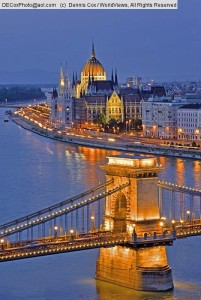
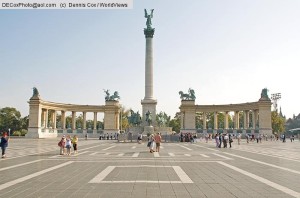
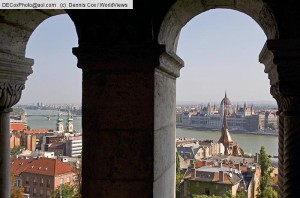
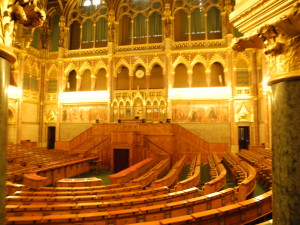
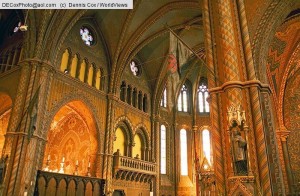











Leave a Reply